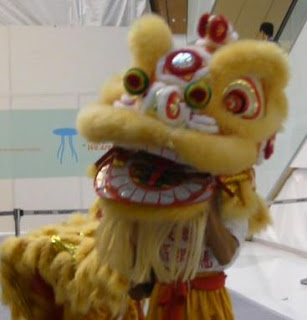
The photo above shows the beautiful Sok Kwu Wan of Lamma Island and its fish farming site.
Our neighbourhood outing group had a half day outing to the Island earlier today.
We took a ferry to Sok Kwu Wan at 11: 50 a.m. and arrived at around 12:35 p.m. We had a short lunch break at a restaurant before we started our journey. Most of the restaurants there are seafood restaurants, selling sea fishes. We were not interested in the sea fishes and took some westernized food instead.
There are two harbours in Lamma Island. The Sok Kwu Wan Harbour (at where we arrived) and the Yung Shu Wan Harbour (from where we left the Island). There is a beautiful hiking route linking the two Harbours. If you walk at full speed, it will take you about one and a half hour to complete the journey. We were not in a hurry. The natural and beautiful scenery of the Island also slowed down our paces. It took us about 2 hours before we arrived at the Hung Shing Yeh Beach where the parents took a break and the kids had a sand castle building hour.
The beautiful Lamma Island sunset gave a final touch to our journey as we walked leisurely towards the Yung Shu Wan Harbour.

It has been over 10 years since I last visited Lamma Island. Compare with the one in my recollection, the Island has become cleaner and tidier. The rocky hiking route I last walked on is now well paved and there are clear and helpful road signs.
A wonderful place for a half day outing.




















































